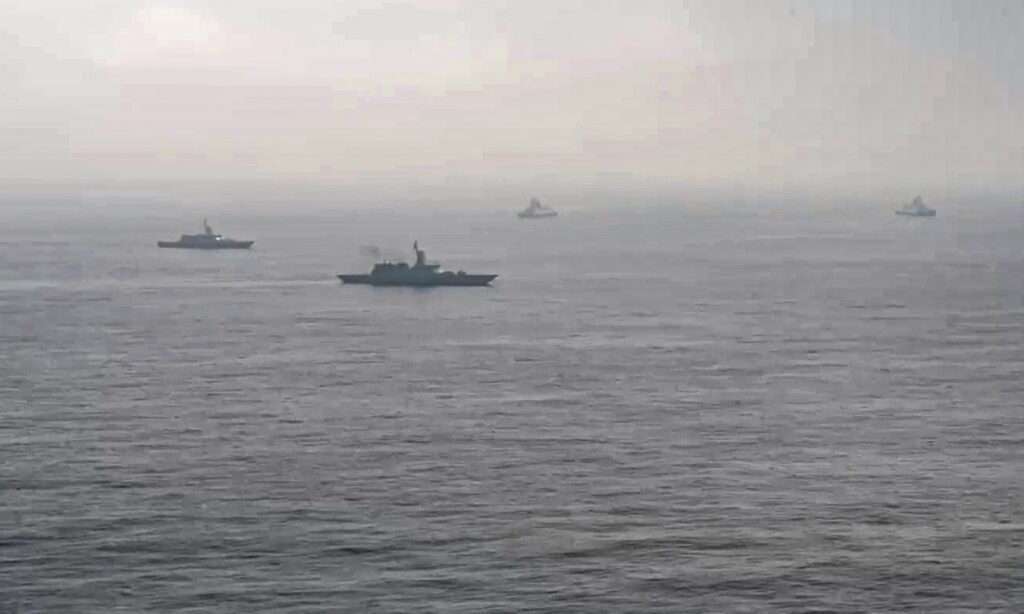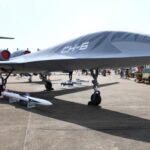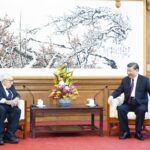Sea-air integrated drills to safeguard regional peace, stability, strengthen cooperation
With a Chinese People’s Liberation Army (PLA) Navy destroyer designated as the command ship, the China-Russia Northern/Interaction-2023 joint military exercise kicked off in the Sea of Japan on Thursday.
The four-day drills will strengthen the two countries’ military cooperation and contribute to the safeguarding of peace and stability in Asia-Pacific amid tensions and potential threats in the region, experts said.
An opening ceremony for the exercise was held in the central waters of the Sea of Japan on Thursday, immediately followed by live actions including sea and air escort drills, China Central Television (CCTV) reported on Thursday.
In the coming days, the exercise will also include deterrence and repulsion, roadstead defense and mock confrontational battles, CCTV reported.
Scheduled to be held from Thursday to Sunday and featuring the use of live ammunition, the Northern/Interaction-2023 joint exercise will feature anti-submarine missions, naval combat, sea and air escort of ships, guarding and defending of detachments of ships when moored in an unprotected roadstead, and ensuring the security of communications in and over the Sea of Japan, the Defense Ministry of Russia said in a press release on Thursday.
Under the theme of safeguarding strategic maritime routes, the exercise will practice basic combat procedures against aerial, surface and underwater targets, Li Yaqiang, a Chinese naval expert, told the Global Times.
With main naval and aviation forces from both sides participating, the exercise should be considered a large-scale one, Li said.
At sea, the Chinese side is represented by the Type 052D guided missile destroyers Qiqihar and Guiyang, the Type 054A guided missile frigates Zaozhuang and Rizhao, and the Type 903 comprehensive replenishment ship Taihu, which rendezvoused with the Russian participating vessels, the large anti-submarine ships Admiral Tribunts and Admiral Panteleev as well as the corvettes Gremyashy and Hero of the Russian Federation Aldar Tsydenzhapov in the designated waters in the Sea of Japan on Tuesday after setting out from Qingdao, East China’s Shandong Province on Saturday.
In the air, the two countries are sending more than 30 aircraft, including fighter jets, anti-submarine aircraft and helicopters, according to the Russian press release. China Central Television reported that the Chinese side has deployed the Y-20 large transport aircraft, the KJ-500 early warning aircraft, the J-16 fighter jet and the Z-20 helicopter to Vladivostok in Russia’s Far East as part of the exercise.
It means that Chinese aircraft are operating from Russian airfields during the exercise, marking a high level of military cooperation and mutual trust between the two countries, Fu Qianshao, a Chinese military aviation expert, told the Global Times.
With the Sea of Japan right on Russia’s doorstep, Chinese aircraft operating from a Russian airfield can significantly decrease the reaction time against potential threats in the region, Fu said.
China sent several different types of aircraft for different purposes to the exercise, with the Z-20 participating for the first time in a joint exercise overseas, observers noted. They said that the diversity of vessels and aircraft shows that an integrated combat system is featured in the exercise, and that the exercise is highly combat-oriented.
To lead the exercise, a joint headquarters was established aboard the PLA Navy destroyer Qiqihar, both sides’ official releases confirmed.
The joint headquarters means that Chinese and Russian officers are commanding the exercise together from the Chinese ship, another Chinese military expert who requested anonymity told the Global Times on Thursday.
Equipped with advanced command and control systems, the Qiqihar and the joint headquarters aboard it can receive information from the entire flotilla, analyze it and send orders in real time, the expert said.
To achieve this, Chinese and Russian command and control systems must also be interconnected, which also reflects a high level of cooperation and mutual trust, analysts said.
The China-Russia joint drills are taking place at a time when tensions are rising in the Asia-Pacific region. Japan has been interfering in China’s Taiwan question, claiming “a Taiwan emergency is a Japanese emergency,” while the US reportedly deployed a nuclear-armed submarine to South Korea on Tuesday for the first time in four decades in an attempt to deter North Korea.
The Northern/Interaction-2023 exercise is part of an annually scheduled China-Russia military cooperation and not targeting any third party, but it serves to safeguard regional peace and stability from any security threats that might occur, analysts said.
Organized by the PLA Northern Theater Command, the exercise is aimed at further elevating the strategic cooperation level of the two militaries and strengthening their capabilities in jointly safeguarding regional peace and stability, as well as dealing with various security challenges, according to a press release from China’s Ministry of National Defense published on Saturday.
After the exercise, the Chinese and Russian naval and aviation forces will hold joint patrols in Pacific waters, the PLA Navy said on Saturday.
Such joint patrols could see the joint forces circumnavigate Japan from the Sea of Japan, the West Pacific and the East China Sea, observers said.
(Global Times)




